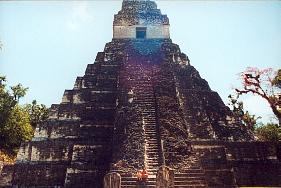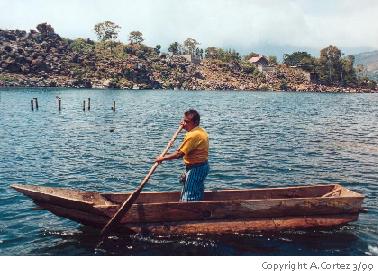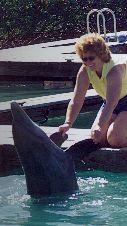 What
I Learned About Taekwondo & the Gifted Student
What
I Learned About Taekwondo & the Gifted Student
Amy
Cortez - Editor Eclectic Telegraph
When people hear the phrase “martial arts”, often
they assume it is the militaristic way of the Asian past. "Tae
kwon do" means “The way of striking with hand and foot”.
Taekwondo, has a fierce history, but presently it enjoys the status
of being an Olympic sport that is mastered by world class athletes.
It is a sport that disciplines your spirit, mind and body. It
is comprised of “forms, “breaking” and “sparring”.
Forms are memorizing a series of typically 10 up to 20 movements
using your arms, legs and full body - similar to a dance. Breaking
is the ability to use your strength and mental training to break
a board using a punching or kicking motion. Sparring is learned
through a series of “one-steps” or body movements
designed for self defense. Sparring at the adult level can be
vigorous, but with the kids, it is light contact with the purpose
being to learn the movements of self defense. All three, in addition
to attiude and philosophy, comprise the sport of Taekwondo.
What I learned about Taekwondo was about the quality of the instructor
and the academy where you learn.
The
other thing I learned is that this is a sport that is just the
thing for a gifted student. It is an incredible sport for being
"perfect" at. You work, over and over at forms that
exercise the body and the mind. In light contact sparring, you
challenge your ideas about strategy, but within a pretty specific
set of boundaries. In class all students perform the same way,
yet those who are willing to work harder at being "perfect"
are sometimes rewarded by being allowed to instruct the other
students. I have found wiuh my student, TaeKwonDo is a place where
if we are not perfect say in Math, we can be perfect athletically
because we have total control over what our body is doing.
If you are serious about Taekwondo as one of the “sports”
for your children, you want to be sure that your school is accredited.
This means that either your instructor (Seon Sang (Nim)(Korean
term)), or your school (Dojang) is a member of the World Taekwondo
Federation (WTF). The WTF was established in 1973 by the Korean
Taekwondo Association and is headquartered at the Kukkiwon, Seoul,
Korea. In the U.S., the United States Taekwondo Union (USTU) maintains
a close relationship with the WTF. You will find that there are
a number of Taekwondo associations in the United States, it is
not enough to just belong to one of these, somehow, there must
be some association with the WTF. Verify this by asking how they
are associated. Some Dojangs will display the WTF flag and have
no association with it or the USTU.
Alternatively, verify the instructor. The instructor should be
a “Master” a 4th Dan black belt or greater with a
certificate from the WTF. A WTF Master can issue certificates
of all the colored belts - those below black. A Master is authorized
through the WTF to issue a certified black belt.
Finally, if your student will be aspiring to black belt level,
you want to be sure that the black belt certificate comes from
the Kukkiwon in Korea and is signed by Dr. Un Yong Kim. The WTF
Master at the Dojang will test the student for the black belt,
but he must send the application to Korea to receive the official
black belt. Verify this by asking where the belt comes from. A
black belt from Korea is the only Taekwondo belt recognized at
the competitive levels.
 Add Travel To Your Curriculum!
Add Travel To Your Curriculum!
Amy
Cortez - Editor Eclectic Telegraph
One
of things homeschoolers can do with ease is to add travel to school
schedules. At the beginning of the year I look at what sort of
topics we plan to explore during the school year, and then my
student and I plan our “field trips”. We’ve
used field trips for Art, World Culture, Foreign language, Science,
Engineering, Geography and History.
 One
of the really good field trips we’ve added to our curriculum
was an excursion to Guatemala, Central America. The plan was to
visit and learn about the modern and ancient Maya and to practice
our Spanish. Before we departed, we made a map of Guatemala and
located the places we were going to visit. On the agenda was Antigua,
Lake Atitlan, Santiago, Chichicastenango, Tikal and Guatemala
City.
One
of the really good field trips we’ve added to our curriculum
was an excursion to Guatemala, Central America. The plan was to
visit and learn about the modern and ancient Maya and to practice
our Spanish. Before we departed, we made a map of Guatemala and
located the places we were going to visit. On the agenda was Antigua,
Lake Atitlan, Santiago, Chichicastenango, Tikal and Guatemala
City.
We chose March for our visit because we knew there would be many
colorful fiestas as this is the most festive time of the year
in Guatemala. Antigua was especially colorful as it was once the
capital of Guatemala. Antigua has returned to small town status
but has a lot of “big city” architecture that survived
the years of earthquake activity that caused the capital to be
moved to Guatemala City. There are a few “Americanized”
places to stay as well as authentic posadas and guest casas.
 The
high country in Guatemala is not for the accidental tourist. To
be a true traveler, you must remember to take the culture as it
is and to not compare it to American standards. The rural Mayan
live very well and are accustomed to hard work, hard play and
a dedication to traditional ways. Spanish is a requirement in
the high country, as well as a knowledge of local customs. It
is not unusual to see armed military personnel in places like
banks and pharmacies. It is also not unusual to see the traditional
Mayan walking along the road in the same sort of garb, worn for
thousands of years. The latter is more common.
The
high country in Guatemala is not for the accidental tourist. To
be a true traveler, you must remember to take the culture as it
is and to not compare it to American standards. The rural Mayan
live very well and are accustomed to hard work, hard play and
a dedication to traditional ways. Spanish is a requirement in
the high country, as well as a knowledge of local customs. It
is not unusual to see armed military personnel in places like
banks and pharmacies. It is also not unusual to see the traditional
Mayan walking along the road in the same sort of garb, worn for
thousands of years. The latter is more common.
Market day is a colorful event where locals meet and greet each
other to buy and sell wares from the different villages. Each
village or town has their own color weave and pattern in the garments
they wear. Santiago Atitlan, a village that is located on Lake
Atitlan, at the base of two volcanoes, is the is the largest,
most traditional lake town and is the capital of the Tzutuhil
Indians. This village is famous for the quality of weaving and
most people still wear the striking traditional costume. Chichicastenango
holds one of the largest markets in the high country. Market Days
are Thursdays and Sundays, and this has been tradition for hundreds
of years.
El Peten Itza, home to the famed wood carvers of EL Remate, is
also a good base for an outing to Tikal, an excavation in progress.
Tikal is the most famous and impressive of the Mayan ruins. 50,000
- 100,000 Mayan lived there at it’s height in 600 AD. Archeologists
have recovered 226 square miles of structures and monuments so
far. Tikal is an excellent site for observing how these detectives
of the ancient world go about their work.
Another one of the topics we have studied is fossils, and boy
is Utah a good place for that! Vernal, Utah home of the Dinosaur
National Monument’s Dinosaur Quarry and Dinosaur National
Monument is an excellent outing.
The Dinosaur Quarry houses a formation that looks like a wave
of fossils. The museum exhibits at the quarry are informative
as well regarding the formation of fossils. In the museum shop
there is a Junior Ranger program booklet that you can obtain to
use as a workbook as you explore the two parks spread over Utah
and Colorado. If your student completes the booklet and can answer
a few questions that the ranger asks, he can earn a certificate,
a Junior Ranger pin and a very cool Junior Ranger patch. The workbook
is much better than the text book we planned to use for our fossil
studies. It covers topics like dinosaurs, natural communities,
ecosystems, fossils, dinosaur ecology, food chains, webs of life,
petroglyphs, arrowheads, settler cabins and wildlife. Our student
used the workbook over the two days to be our tour guide, to complete
the learning activities and to earn the patch. He interviewed
with a Park Ranger who asked him a series of questions and discussed
with him the items he was unclear on. The personal interview with
the Ranger was the best part of the trip!
On another field trip, we studied coral reefs. We actually studied
coral reefs in 2 parts, the Northern part of the study was in
the Florida Keys and the Southern part was in Belize, Central
America. We’ll save the details of Belize for another time!
The Florida keys can be a wonderful refuge when you get tired
of snow, and that is why we plan our coral studies for February.
Airfare can be at a premium, but if you book in December, there
are deals to be found. Our field trip agenda included a glass
bottom boat ride to view reef life, a dolphin encounter and sunset
and sunrise walks at the shore (there are no beaches, as it is
all reef in the Florida keys).
We stayed at a place called Hawks
Cay Resort on Duck Key. We chose this place because it was
situated in the heart of the keys. It also offered the glass bottom
boat rides and the dolphin encounter and is near the Florida Dolphin
Research Center. The Dolphin Research Center (www.dolphins.org),
is a not-for-profit education and research facility, home to a
family of Atlantic bottle nose dolphins and California sea lions.
They are located on Grassy Key.
 Before
we went on the glass bottom boat ride we determined what animals
we might see on the reef at that time of year. Before we set out
on the boat ride we made a check list of the animals and checked
them off as we viewed them in their natural habitat.
Before
we went on the glass bottom boat ride we determined what animals
we might see on the reef at that time of year. Before we set out
on the boat ride we made a check list of the animals and checked
them off as we viewed them in their natural habitat.
The Dolphin Encounter at Hawks Cay helped us to learn about the
Florida Keys’ sensitive Ecosystem and marine life in an
up-close encounter with Atlantic bottle nose dolphins. There were
three programs (one activity was an actual swim with the dolphins)
we could choose from and we chose the dockside encounter where
we got to meet the dolphins and interact with them.
Sunset adventure(s) at the shore proved to be more fruitful than
our sunrise walks. At sunset we saw many crabs, jellyfish, pelicans
and other creatures doing what they do on the reef at sunset.
We drew pictures, took notes and photographs.
If you can’t get to the Florida Keys, here’s a coral
recipe so you can grow your own reef: You’ll need a glass
pie pan, (a coral base: charcoal, porous brick, piece of cement
or a sponge) water, table salt, liquid bluing, ammonia, food coloring,
measuring spoons. Place the coral base in the glass pie pan(we
used a sponge), add 2 tblsp water, 2 tblsp salt, 2 tblsp liquid
bluing, 2 tblsp ammonia over the coral base. set the bowl away
from where it can get bumped. The next day add 2 more 2 tblsp
salt. On the third day pour into the bottom of the pie pan (not
directly on the base), 2 tblsp each of salt, water, bluing and
ammonia; then add a few drops of food coloring (if you want colored
coral). If your formation does not start to grow by the fourth
day you may need to add more ammonia to aid the growth. The explanation
you give to the student is that just as the water, bluing and
ammonia dissolved the salt to form crystals, coral polyps use
dissolved calcium carbonate to create the stony cup that protects
their soft bodies and creates reefs.

